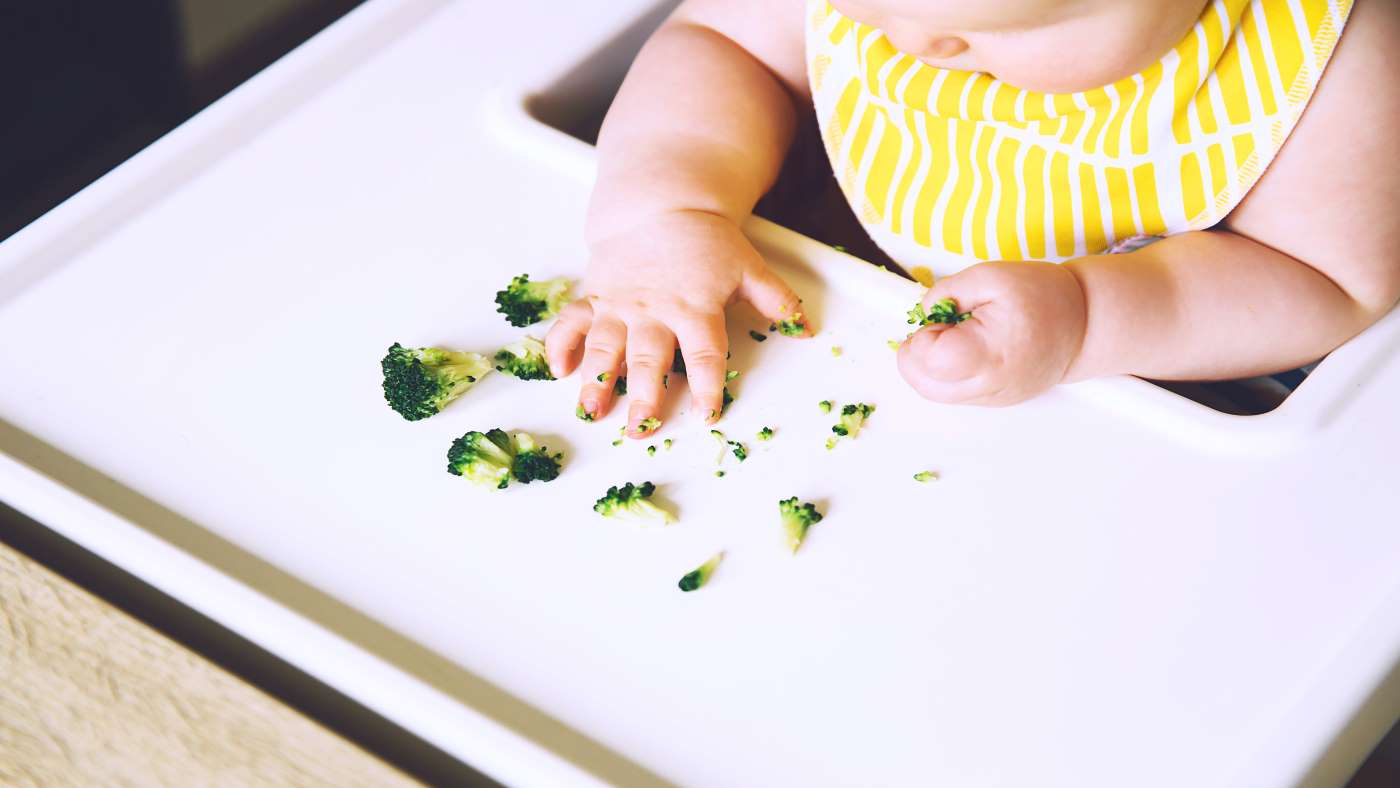Responsive feeding when weaning – advice from Lucy Upton, Paediatric Dietician and Feeding Therapist

Responsive feeding (encouraged by the World Health Organization) is a way of feeding that is considered to have many benefits, including supporting children's health and development, wellbeing and long-term feeding habits. Here, Lucy shares some ways to apply responsive feeding when it comes to solid foods
What does responsive feeding involve?
- Understanding and then responding to your baby’s cues (their communication to you) around feeding, for example, when they are hungry and when they are full.
- Understanding that feeding is about more than just nutrition. Feeding also builds attachment, attunement, comfort, love, reassurance, patience and trust.
- Establishing and nurturing a positive shared interaction between you and your baby when feeding or during mealtimes.
- Trusting your baby’s appetite and ability to self-regulate, for example, starting and stopping feeding by listening to what their body needs (internal cues).
Feeding responsively – with solids
You may have used responsive milk feeding already, so as your baby transitions onto solids, you can still apply that approach to eating. If you haven't tried responsive feeding before, here are the principles of it and cues to look out for from your baby.
Behaviour, body language, noises and expressions are their way of communicating with you throughout weaning too
Responsive milk feeding moves away from a focus on prescribed expectations or recommendations online/on the tin/from others, volumes or time passed since feeds. In the same way, responsive feeding with solids focuses on supporting your baby’s ability to regulate their appetite with food by responding to their cues at mealtimes.
Responsive feeding during weaning isn’t just for babies following a finger foods/baby-led weaning approach. It can be used for spoon feeding, finger foods or the combination approach to weaning – all can be led by your baby!
With any approach, as parent you can provide your baby with appropriate foods, progressing towards balanced meals. You can also provide a routine and a supportive eating environment, while tuning in to your baby’s typical hunger and fullness cues (signals) – allowing you to respond appropriately at the mealtime.
Hunger cues with solids:
- Fussing, crying or becoming irritable
- Gazing, reaching or pointing for foods
- Opening mouth and hands
- Leaning towards or opening mouth towards a spoon or food
- Exaggerated or expressive facial expressions, smiling, noise or cooing around food
- Becoming excited around food
- Showing or expressing wish for certain food or mealtime with sounds or words (older baby)
I’m done/finished – fullness cues with solids:
- Closing mouth or clamping it shut as you bring food towards them
- Turning head or body away from food
- Pushing food, your hand or the spoon/fork away
- Crying or becoming upset at the table/highchair
- Slowing pace/speed of feeding
- Becoming distracted more easily by surroundings
- Holding or pocketing food in their mouth
- Headshaking
- Throwing food (there may be other reasons for this)
- Gagging or vomiting
It’s tough, but try to avoid drawing comparison with yesterday or last week's meals, other babies' intake or your expectations of ‘enough’.
During weaning there are no recommendations for portion sizes, and allowing your baby’s appetite to lead, right from the start of weaning and into the toddler years, can be hugely beneficial for their relationship with food, mealtimes and you!